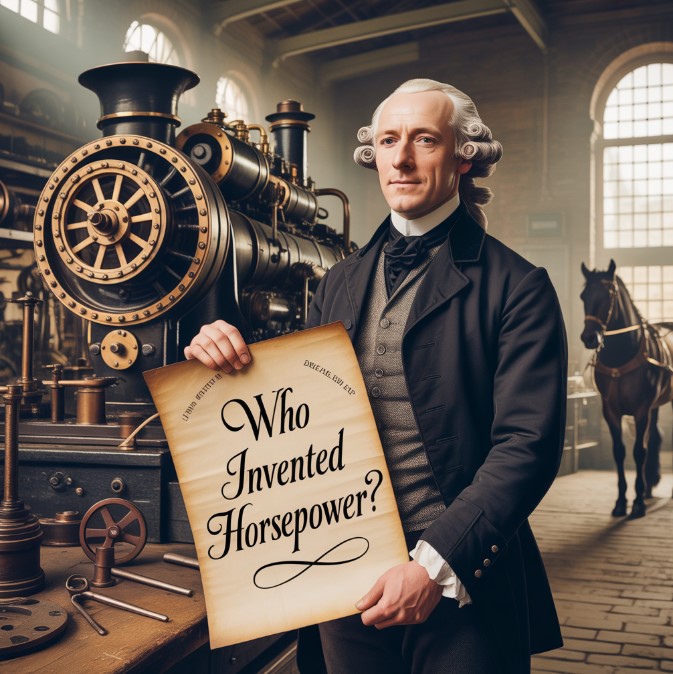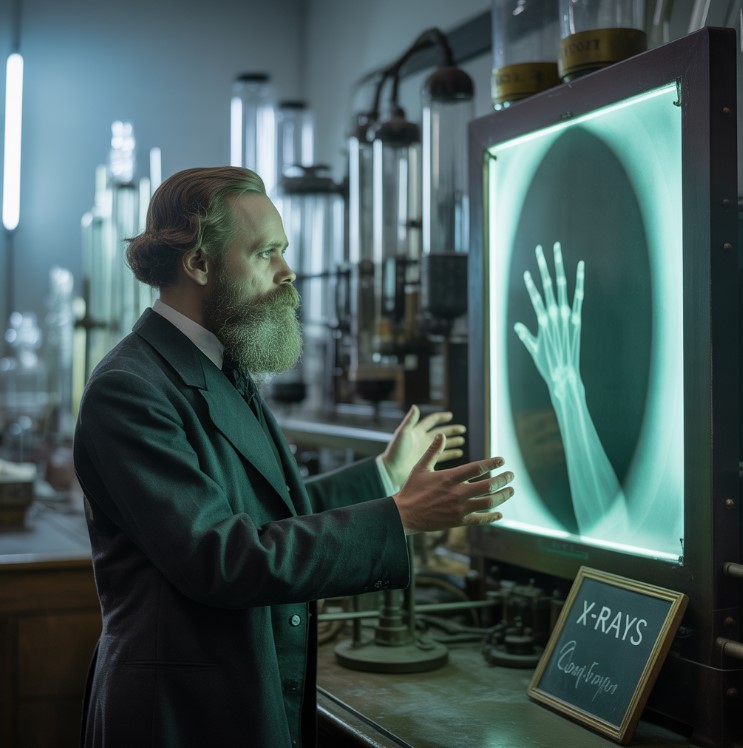Contents
Who Invented Horsepower?
Today, we hear about horsepower when comparing the performance of vehicles like cars and motorcycles, discussing engine capabilities, or even for smaller machinery like lawnmowers and boat motors.
But the idea of “horsepower” was actually created way back in 1783 by the Scottish inventor and mechanical engineer James Watt, whose revolutionary improvements to the steam engine were transforming industrial capabilities.
He came up with it to measure how strong and effective his newly developed steam engines were, providing a relatable metric for their work output compared to traditional power sources.
We often shorten “horsepower” to the widely recognized and frequently used abbreviation “HP,” a standard convention in automotive specifications, engineering discussions, and popular media.
The Story of Horsepower
James Watt didn’t invent the steam engine, but he made profound and crucial improvements that dramatically increased its efficiency, fuel economy, and reliability, transforming it into a practical and commercially viable power source for factories, mines, and mills.
His big problem was that when he tried to sell his new engines, people didn’t have a simple, standardized, or intuitively understandable way to quantify and compare the immense power and work capacity of these advanced machines against existing methods.
So, Watt needed a simple way to show people exactly how powerful and productive his new engines were, expressed in terms they could easily relate to their everyday experiences with traditional work animals and existing mechanical systems.
He thought, “What’s a common, easily understood measure of work output or continuous power that everyone in society, from farmers to industrialists, already understands from their daily lives and operations?”
His answer: the reliable and widely understood working power of a draft horse, which was a primary source of mechanical effort for lifting, pulling, and grinding in agriculture, mining, and transport during the 18th century.
He calculated that an average horse could lift 33,000 pounds (imagine a very heavy car, perhaps an early steam locomotive or a significant load of coal) one foot per minute, performing this work consistently and sustainably over a typical working day.
He decided to call that precise amount of work and sustained power “one horsepower,” establishing a practical, intuitive, and groundbreaking unit that would forever change engineering terminology and industrial measurement.
How We Use Horsepower
This was a brilliant idea because it made the abstract and complex concept of engine power immediately tangible and relatable to potential buyers, allowing them to compare his machines directly to the familiar output of several working horses and grasp their immense productivity.
If Watt said his engine had “2 horsepower,” people could easily picture it performing the continuous work equivalent to two strong draft horses pulling plows, turning millstones, hoisting materials from mines, or pumping water, making its industrial utility immediately clear and understandable.
After steam engines became widely popular and industrialized societies flourished, this “horsepower” measurement was universally adopted and used for all types of mechanical engines and motors across various industries and technological advancements, from early internal combustion engines to electric motors.
That’s why even today, when we talk about cars, trucks, or motorcycles, we still measure their engine output, performance capabilities, and overall power and strength in horsepower (HP), a persistent legacy of Watt’s ingenious and practical solution for quantifying mechanical work.
When you hear a car has “100 HP,” you can vividly imagine it’s as strong as 100 powerful draft horses working together simultaneously to propel that vehicle forward, giving a tangible mental image of its raw driving power and acceleration potential.
Of course, a car can go much, much faster than horses can run (a 100 HP car can easily go 150 km/h or more), but the “horsepower” number gives you a good, immediate, and comparable idea of how much continuous power the engine can generate, influencing its acceleration, pulling capacity, and overall dynamic performance characteristics on the road.
HP vs. CV (Caballos de Vapor)
You might also hear about “CV” (which stands for Caballos de Vapor, or “Horses of Steam” in Spanish, a historical unit of power frequently used in several European countries, notably France, Spain, and Italy, as well as parts of Latin America).
It’s very similar to HP, but they’re not precisely identical, representing slightly different calculation methodologies and historical contexts, which leads to minor, though sometimes significant, numerical discrepancies in power ratings.
While HP was mainly used in places like England (where James Watt lived), the United States, and other English-speaking nations and Commonwealth realms, CV gained traction and became the preferred metric in continental European countries such as Germany, Spain, and Italy, reflecting different engineering traditions.
A CV is just a tiny bit less powerful than one imperial horsepower, specifically defined as 735.5 watts (or 0.986 HP), reflecting a slightly different energy conversion standard and a metric system origin.
For example, 1 HP is a little bit more powerful than 1 CV, specifically equating to approximately 1.014 CV, a small but sometimes crucial difference in precise engineering specifications and performance comparisons.
Modern Measurements: Watts and Kilowatts
These days, scientists and engineers often use a more universally recognized and standardized unit called watts (W) or its larger multiple, kilowatts (kW), which are the official units for power within the International System of Units (SI) and preferred for scientific accuracy. (1 kilowatt is simply 1,000 watts, making it a more convenient scale for measuring larger power outputs, like those of electric vehicles, industrial machinery, or even household appliances).
But horsepower is still a very popular, easily understood, and widely accepted way for us to talk about engine power and vehicle performance, especially in the automotive world, due to its intuitive connection to physical effort and centuries of historical familiarity with its meaning.
To give you an idea, 1 horsepower is roughly three-quarters of a kilowatt (or, to look at it the other way around for easier comparison, 1 kilowatt is approximately 1.34 horsepower), providing a practical conversion factor between these common power units.
James Watt and the Steam Engine
Watt’s big achievement was meticulously looking at the crude and inefficient steam engines that existed before him, systematically fixing their inherent problems, and making them vastly more practical, fuel-efficient, and reliable enough for widespread industrial adoption, thereby fundamentally altering manufacturing, transportation, and mining processes across the globe.
He made them powerful enough to turn massive factory wheels, pump water from deep mines, drive textile machinery, and do real, continuous work on an industrial scale, which catalyzed the acceleration of the Industrial Revolution, driving unprecedented economic growth, technological innovation, and profound societal transformation across the world.







